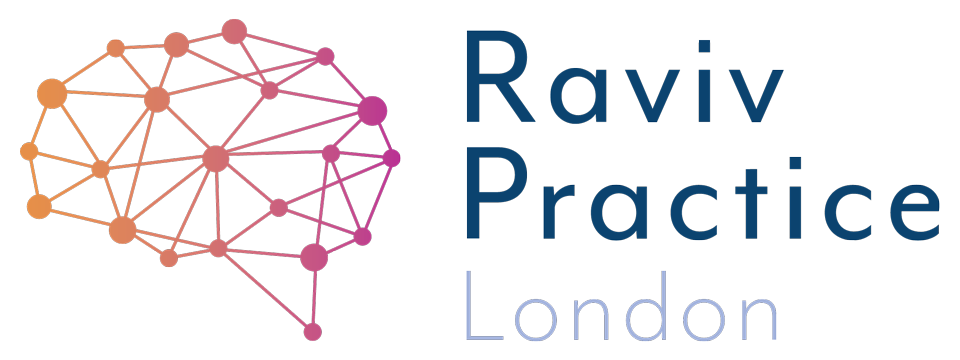How often should you repeat the Safe and Sound Protocol?
The Safe and Sound Protocol (SSP) is a ground-breaking therapy for both children and adults that has helped countless individuals address anxiety. Parents have reported, for example, that their children were able to receive hugs for the first time without feeling overwhelmed.
“Parents have reported, for example, that their children were able to receive hugs for the first time without feeling overwhelmed. ”
This blog post is an account of how the Safe and Sound Protocol has been used in our therapy setting since it was launched and the new developments this year regarding digital delivery.
The launch of SSP
The Safe and Sound Protocol was launched in March 2017 by Integrated Listening Systems (iLS) and the makers of SSP asked all iLS therapists to join them We at Raviv Practice London were curious and wanted to know how a five-day intervention would benefit children by reducing anxiety; it seemed doubtful. However, iLS were pioneers in Listening Therapy solutions, and we thought it was at least worth learning more before making any judgement.
Dr Stephen Porges
We learnt, that while the product SSP was new, the research behind it was decades old. The scientist responsible, Dr Stephen Porges, with his pioneering work ‘The Polyvagal Theory , had been working for over thirty years behind the scenes. I read Dr Porges’ book The Polyvagal Theory. It struck me as different from others in the field of trauma, such as the work of Dr Bruce Perry or Dr Peter Levine, as it promised fast results, and this seemed unbelievable.
When we received our SSP ‘MP3 Unit and headphones’ late 2017, we tried it out for the full five days and believed the results would be immediate. When there were no changes, we assumed we had done something wrong, so we tried again. Again there was no dramatic change. I personally thought our MP3 player was faulty and was considering returning it.
We should not have anticipated that the results were going to be immediate, as the nervous system was not reacting to a hot surface, it was responding to a different type stimuli, and a different stimulus needed to be presented for this change to be registered. Three weeks later, came a bolt out of the blue. I had climbed up ‘a not so tall’ ladder cleaning windows, someone called out for me and all of a sudden, I felt my heart racing. Fear and panic struck without any warning. It did not result in an accident, quite the opposite, I was extra cautious, but it was panic never the less. Dr Porges says, before things can get better, the nervous system goes through changes and then it resettles to a different way of working, a smoother way. Sure enough positive changes followed thereafter.
Everyone who has tried SSP reported feeling more relaxed, with a more of a profound sense of connection with others, less worry, less fretting and more comfortable in themselves.
At Raviv Practice London, our work has been consistent, with adults and children alike using the SSP therapy, always applying a high level of care and caution to each training.
New developments and SSP digital
At first, we thought only children with ASD repeated this program, but now we realise everyone should return to this therapy at some point. Those children on the spectrum repeat every six months when the effects start wearing off, whereas others return anytime between seven to twelve months.
Each time the student returns, the effects accumulate and the duration of the therapy lasts a little longer. What is brilliant is that it is now available digitally. Going digital means you need a smart phone, and you download the App and you can listen once you are ready.
Less is more
Dr Stephen Porges stresses that this program must be delivered slowly, it can take five days for someone who does sixty minutes per day, but it can also take thirty days because ten minutes per day can be enough for another person. This reduced stimulation helps individuals assimilate the information in their nervous system at their own pace. It is like listening with care when someone is whispering, When a person’s nervous system is subjected to a small amount of the SSP therapy, it is reaching deeper for that tiny stimulation being received.
Another metaphor would be that it is bit like eating a small amount of chocolate. A tiny piece of chocolate can have a profound effect on your taste buds, and if you prepare for that event, your taste buds are anticipating its arrival.
This chocolate metaphor works well, because that is precisely how a good therapist should implement SSP, in small amounts, suited to the individual person.
Digital Delivery of The Safe and Sound Protocol.
The digital version of SSP allows each person to absorb changes at the pace they are most comfortable, without a concern or cost of a physical unit being returned in a timely manner.
Let’s schedule a time to talk further on this if you want to learn more.
Have you read our blog on an Adult’s experience of SSP?
Dyslexia? Dyspraxia? ADHD? ASD? Speech & Language? Developmental Delay? Anxiety?
Is every school day a struggle? As a parent, you may feel exhausted and on this journey alone. Each year you see the gap getting wider. You need to do something - change the approach, help your child learn for themselves, find a way to turn this around - to help while you can - do this NOW. the first step is free.
About the Author
Usha Patel is a Neurocognitive Therapist and Director at Raviv Practice London. Parents searching to help their suspected/neurodiverse child can get evidence-based solutions with results in as little as 8 weeks. Those in search of jargon-free help can get started straight away.

